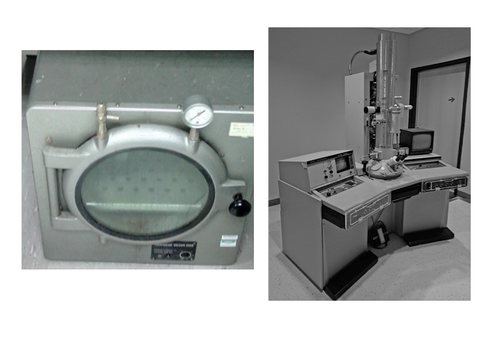Originally posted on 5 Sept 2014
New isn’t always better.
I had this conversation a few days ago with a fellow researcher: The engineers in his lab had just set up a new oscilloscope, an instrument that can be used to measure an ultrasound signal. (Edit: This is not really true, but for the purposes of this rant, it will do such fine.) This new marvel of an oscilloscope had a whole bunch of fancy features and elaborate knobs. Unfortunately, just setting up a simple experiment was now immensely complicated, while it was really easy to do on the old system.
While he was complaining about this, the only – very philosophical if I have to say so myself – answer I could give him was: “Well, new isn’t always better.”
If you ignore the painful cliche, there seems to be some truth in my statement. Why change something if it is working perfectly well for what you want it to do? That’s the problem with engineers, there’s always an extremely cool way to do things. It might be slightly more complicated, and redundant, but if you can do make something awesome, why settle for the boring, easy method?
(There is actually a smbc-comic that describes this wonderfully.)
But I have to admit , I tend to do the same. Then again I am some sort of an engineer. Today I 3D printed a small cylinder, while the ink tube of a fountain pen probably could have served the same purpose. Why did I 3D print it then, you might ask? Because I could! 3D printing is awesome!
I mean, come on, look at this machine making it happen:

I’m diverging. Another thing I wanted to point out, is that old stuff can be extremely robust and do the job just at well. A few examples (straight out of my university) are an oven that looks as if you can mount in on your head and walk on the bottom of the ocean, and an electron microscope that looks as if it was stolen from a space ship on a 70’s sci-fi movie set. (The EM microscope photo isn’t actually the one in my building but a picture I found through googling “old electron microscope”. It looks very similar to the one they have downstairs.)

Granted, it might not provide the same resolution. But for a quick check and for certain applications, it’s good enough. And it looks absolutely antique. I guess you can compare it with having a record player, there are much easier and better sounding ways of playing music nowadays, but maybe you enjoy the crackle to the sound and the extra work of having to wind it up.
So, the moral of my story is, there’s no school like the old school. Depending on the application, that is. As a geeky and slightly hipster engineer, I seem to alternate between the two. I like to use wonderfully antique equipment sometime, and slightly too elaborate novel methods other times.
On a side note, I came across an this article: a Scottish Distillery has sent a batch of whiskey to space to see how zero-gravity conditions influence the interaction between their whiskey and some charred oak. It seems a bit far-fetched to me, why would you even want to know how things react without gravity? Why would you spend all that money to send things to space. Because you can, obviously.
As quoted from the director of the distillery in question: “This is one small step for man but one giant leap for whisky.”
I’m sure it is.

